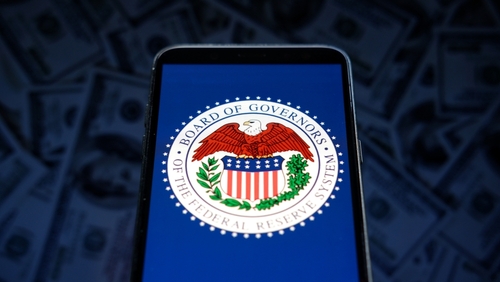
Monetary Policy & Inflation | US

Monetary Policy & Inflation | US
This article is only available to Macro Hive subscribers. Sign-up to receive world-class macro analysis with a daily curated newsletter, podcast, original content from award-winning researchers, cross market strategy, equity insights, trade ideas, crypto flow frameworks, academic paper summaries, explanation and analysis of market-moving events, community investor chat room, and more.
Our Fed LLM sentiment index has been converging with US 2-yr yields and showing dovishness since early April. Previously, the index indicated Fed hawkishness, by contrast with 2-yr yields pricing Fed dovishness (Chart 1).
The latest illustration of this change of trend in Fed speak is a 24 April interview of Cleveland Fed President Hammack (non-voter, hawk) who stated, ‘the Fed could move in June if we have clear and convincing data.’
The turnaround in Fedspeak likely reflects three factors:
President Trump last week told reporters he had no intention of firing Chair Powell, a marked departure from earlier threats to do so. Markets have widely viewed this as the Fed winning the staring contest with the White House.
Rather, Trump’s move increases the risk of policy easing. This is because the Fed no longer must prove its independence. More importantly, the corollary of Fed independence is accountability. By recognizing Fed independence, Trump is also giving the Fed responsibility for any economic slowdown. The Fed is likely to be more responsive to public perceptions that it is behind the curve than to a frontal attack on its independence.
The premise of the Fed’s wait-and-see policy stance is that it will produce more information about the administration’s long-term policy plans and their impact. This is increasingly less likely. The administration’s zigzagging tariff policy suggest it does not have a clear endgame. If the endgame is the elimination of the US current account deficit, it is neither feasible nor desirable. The pursuit of this flawed policy goal is more likely to bring about a recession leading to policy and possibly political change.
The best off-ramp for the administration would be a series of bilateral agreements reducing tariff and non-tariff barriers to trade. Whether these would lead to a smaller external deficit is unknowable. In a large, complex, market-based economy, the trade balance reflects millions of decentralized transactions from profit making private agents, rather than government fiat.
The negative impact of the administration’s policies on growth is already visible. Average real consumption in January-February was flat relative to Q4 due to an increase in precautionary savings triggered by the extraordinary policy uncertainty. By contrast, consumption increased by 4% SAAR in Q4 relative to Q3. Meanwhile, the end of student debt forbearance is adding downside risks to consumption.
Businesses report heightened pessimism caused by policy uncertainty, which may well translate into lower employment and investment. This week’s NFP will be key.
Tariff frontrunning has hidden some of these weaknesses. However, the ongoing pickup in consumption, capital goods and industrial supplies spending will be matched by an equivalent decrease later in the year.
Also, downside surprises in PPI and import prices show exporters, importers and wholesalers are partly absorbing the tariff increases, possibly due to softer US demand.
More signs of demand weaknesses such as low NFP or continued consumption contraction would raise recession risks. Therefore, a June Fed cut would be good risk management. I agree with markets currently pricing two-thirds of a recession risk.
A June cut would be earlier than I initially expected. A recession is my base case scenario but due to inflation risks, I initially expected the Fed to cut late and fast (i.e., July or September and six cuts altogether this cycle). However, our LLM suggests that Fed thinking is shifting!
(The commentary contained in the above article does not constitute an offer or a solicitation, or a recommendation to implement or liquidate an investment or to carry out any other transaction. It should not be used as a basis for any investment decision or other decision. Any investment decision should be based on appropriate professional advice specific to your needs. You are not permitted to publish, transmit, or otherwise reproduce this information, in whole or in part, in any format to any third party without the express written consent of Macro Hive. This includes providing or reproducing this information, in whole or in part, as a prompt.)
Spring sale - Prime Membership only £3 for 3 months! Get trade ideas and macro insights now
Your subscription has been successfully canceled.
Discount Applied - Your subscription has now updated with Coupon and from next payment Discount will be applied.